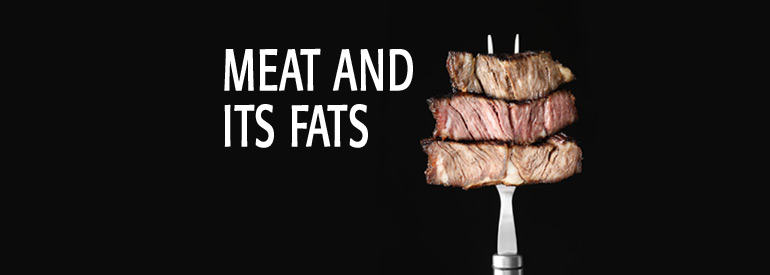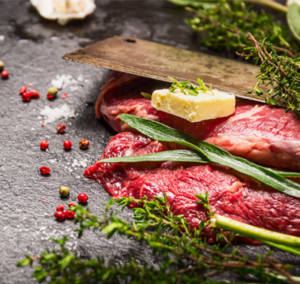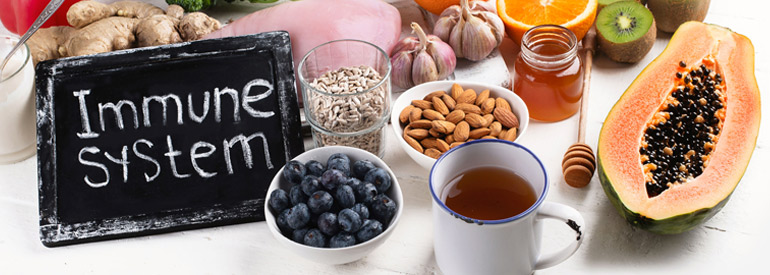
Meat yes, but with quality fats!

Meat and its fats
Meats, especially red ones, have been demonized for years due to their saturated fat content, which inevitably brings with them what is considered the number one responsible for many diseases, particularly cardiovascular diseases, cholesterol.
In reality, meats do not contain only saturated fats and it would be desirable to pay attention to their lipid profile exactly as it does with proteins and calories. Meat, fish, dried fruit have different lipid profiles, often with substantial differences from each other.
In meat muscle saturated fats, in particular myristic, palmitic and stearic fatty acids, represent 45 – 48% of total lipids, monounsaturated fats (MUFA) represent 35 – 45% and polyunsaturated fats (PUFA) 5 %.
The most represented PUFAs are linoleic and linolenic acid while the MUFAs are mainly represented by oleic acid.
The lipid profile of meat can go through important variations in relation to the animal’s diet. Grazing, for example, affects the decrease in palmitic acid in both ruminants and monogastrics.
The impact of saturated and polyunsaturated fatty acids in meat
We know that increasing the intake of saturated fats with the diet, especially myristic acid and palmitic acid, increases the synthesis of cholesterol and this favors the accumulation of LDL, a risk factor for the outbreak of cardiovascular diseases.
The relationship between polyunsaturated fatty acids and saturated fatty acids is a very important index for assessing how healthy the lipid component of meat is. This ratio should be 0.4, but in sheep and goat meat it is about 0.15 and even drops to 0.11 in cattle because in the rumen the unsaturated fatty acids undergo the so-called bio-hydrogenation process by microorganisms there present, even if a part of the unsaturated fatty acids in the animal’s diet, bypasses the rumen and is absorbed and deposited directly in the body fat.
If the proportion between polyunsaturated fatty acids and saturated fatty acids in meat is increased, the effect of consuming meat with this lipid profile will have a less important impact on the increase in plasma cholesterol.
Let’s choose the meat:
- On what considerations should we base our choice? It is not necessary to give up meat consumption, because ruminant meat is also a good source of polyunsaturated fatty acids, phospholipids and isomers of conjugated linoleic acid.
- What should be done? First of all, when we choose the meat, be ensure of its origin, avoiding the one from intensive farming, choosing the one from grass-fed animals (grazing) because this involves a decrease in the omega-6 / omega-3 ratio of meat and an increase in the proportion between polyunsaturated and saturated. Furthermore, animals grown according to their natural times contain more conjugated linoleic acid correlated with the high content of polyunsaturated fatty acids of the grass which generally has an omega-6 / omega-3 ratio of about 1 / 3.5. In this way we will be able to be more relaxed and consume a meat-based meal serenely, alternating beef with sheep meat and poultry according to the recommended consumption frequencies.
Nutrilipidomics recipe
Thyme-flavored beef strips
Ingredients (2 people)
- 300 g of strips of grass-fed beef
- 30 g of extra virgin olive oil
- 20 g of pine nuts
- 20 g of black olives
- 5 g of fresh thyme
- 20 g of flour 00
- 1 clove of garlic (to be removed)
- 100 g of fresh carrot
- Salt
In a pan put the oil, garlic, chopped thyme, finely chopped carrot, pitted olives cut into chunks.
Heat until the ingredients are wilted and at this point remove the garlic. Cook for 2 or 3 minutes over very low heat.
Flour the strips well, add them to the sauce and cook for another 6-7 minutes, stirring frequently.
When the meat is colored, add the pine nuts, add salt and cook for another 2 minutes. Finally turn off and let it rest for a couple of minutes before serving.
Nutritional values per recipe and per person
| Kcal | Pro-teins (g) | Carbs (g) | Sugar (g) | Fats (g) | Satu-rated (g) | Monoin-saturated (g) | Polin-saturated (g) |
Chole-sterol
(mg) |
Fibers (g) | |
| Beef | 243 | 36 | 7,29 | – | 7,56 | 3,54 | 2,85 | 0,48 | 153 | – |
| Evo oil | 269 | – | – | – | 30 | 4,14 | 21,8 | 3,15 | – | – |
| Pine nuts | 134,6 | 2,74 | 2,6 | 0,718 | 13,67 | 0,98 | 3,75 | 6.81 | – | 0,74 |
| Olives | 23 | 0,17 | 1,25 | – | 2,14 | 0,28 | 1,57 | 0,18 | – | 0,64 |
| Thyme | 5,05 | 0,28 | 1,22 | – | 0,084 | 0,02 | 0,004 | 0,026 | – | 0,7 |
| Flour 00 | 77,2 | 1,94 | 14,5 | 0,09 | 0,29 | 0,06 | 0,038 | 0,17 | – | 0,48 |
| Carrot | 41 | 0,93 | 9,58 | 4,74 | 0,24 | 0,037 | 0,014 | 0,12 | – | 2,8 |
| Total per recipe | 792,8 | 42 | 36,44 | 5,54 | 53,98 | 9,06 | 30,02 | 10,93 | 153 | 5,36 |
| Totale per person | 396,4 | 21 | 18,22 | 2,77 | 26,99 | 4,53 | 15,01 | 5,47 | 76,5 | 2,68 |
Article by
Dr.ssa Nicoletta Bocchino – Nutrition Biologist
The food recommendations in the article are not intended to replace a personalized food plan and are to be adapted to specific cases.
Photo: 123RF Archivio Fotografico: 42778619 ©Victoria Shibut / 123rf.com | 114419679 ©Olga Yastremska / 123rf.com
- On 5 October 2020




